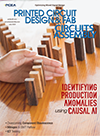The market for recycled electronics, and what companies can do with excess stock.
Circularity and inventory management intersect two key areas for electronics manufacturers. They are problems as old as the industry. In the early 1990s, for instance, an entrepreneur named Jerry Haller had an idea for a component exchange system set up much like trading financial stocks on Wall Street. He called the operation Fast Parts. It never caught on, however, nor did the many attempts others made to emulate it.
A few decades later, however, the industry might finally be ready for sustainable resource management.
The time is now for serial inventor Joe Fjelstad’s answer to simplifying component assembly.
Joe Fjelstad is a renowned innovator, environmental advocate and the visionary mind behind the Occam Process, a groundbreaking advancement in electronics manufacturing. In this in-depth conversation, Fjelstad shares the journey of Occam, its transformative potential, and the wisdom gathered over his illustrious career.
Introducing nitrogen to the solder process can enhance reliability and yields.
Inert gas soldering systems, which use a controlled nitrogen blanket atmosphere and an entry vacuum oxygen/nitrogen exchange chamber, offer several key benefits:
A factorial design investigating solder paste volume under varied squeegee pressure and squeegee types.
It is generally agreed that, on average, 40% to 60% of the defects generated by a surface mount production line can attributed to the solder paste screen (stencil) printing process. This process comprises different key elements designed to work together to generate the most optimal performance and results. These elements include the following:
Selecting the right paste requires an understanding of its properties.
A solder paste’s viscosity and thixotropic properties influence its performance in different production environments.
Viscosity is a measure of a fluid’s resistance to flow. Think of it as a fluid’s “thickness” or “thinness.” A fluid that flows slowly, like molasses, has a high viscosity, while one that flows easily, like water, has a low viscosity.
While cheaper to use, uncoated stencils can have a detrimental effect on printing performance.
In a recent study focused on optimizing solder paste transfer efficiency, the initial phase used factory-applied coated stencils to isolate and understand the effects of solder alloy powder size on print performance. This approach ensured precise data by minimizing stencil-induced variations.
Our follow-up study explores the implications of using uncoated stencils, which are used in many manufacturing settings.
Factory-applied nanocoated stencils are designed to enhance the release of solder paste, while uncoated stencils are still widely used due to their cost-effectiveness. The choice between these stencils can play a significant role in determining the quality and efficiency of solder paste application.
Press Releases
- Kitron Strengthens Order Backlog with EUR 11 Million Contract for Defense Communication
- ZTEST Electronics Inc. Announces Transition to the OTCID Market
- SEMI and TechSearch International Release 2025 Edition of Worldwide Semiconductor Assembly & Test Facility Database
- Coherix Unveils Industry-First Service Program for Adhesive Dispensing Systems
POPULAR
- Editorial Contributions
- Smarter SMT Starts at the Reel: How Splicing Kits are Powering Efficiency
- Factors Contributing to Solder Ball Formation: A Guide
- Verifying PCBA Cleanliness with Ion Chromatography
- Systematic Troubleshooting in Electronics Assembly: A Case Study in Solder Balling and Process Optimization


